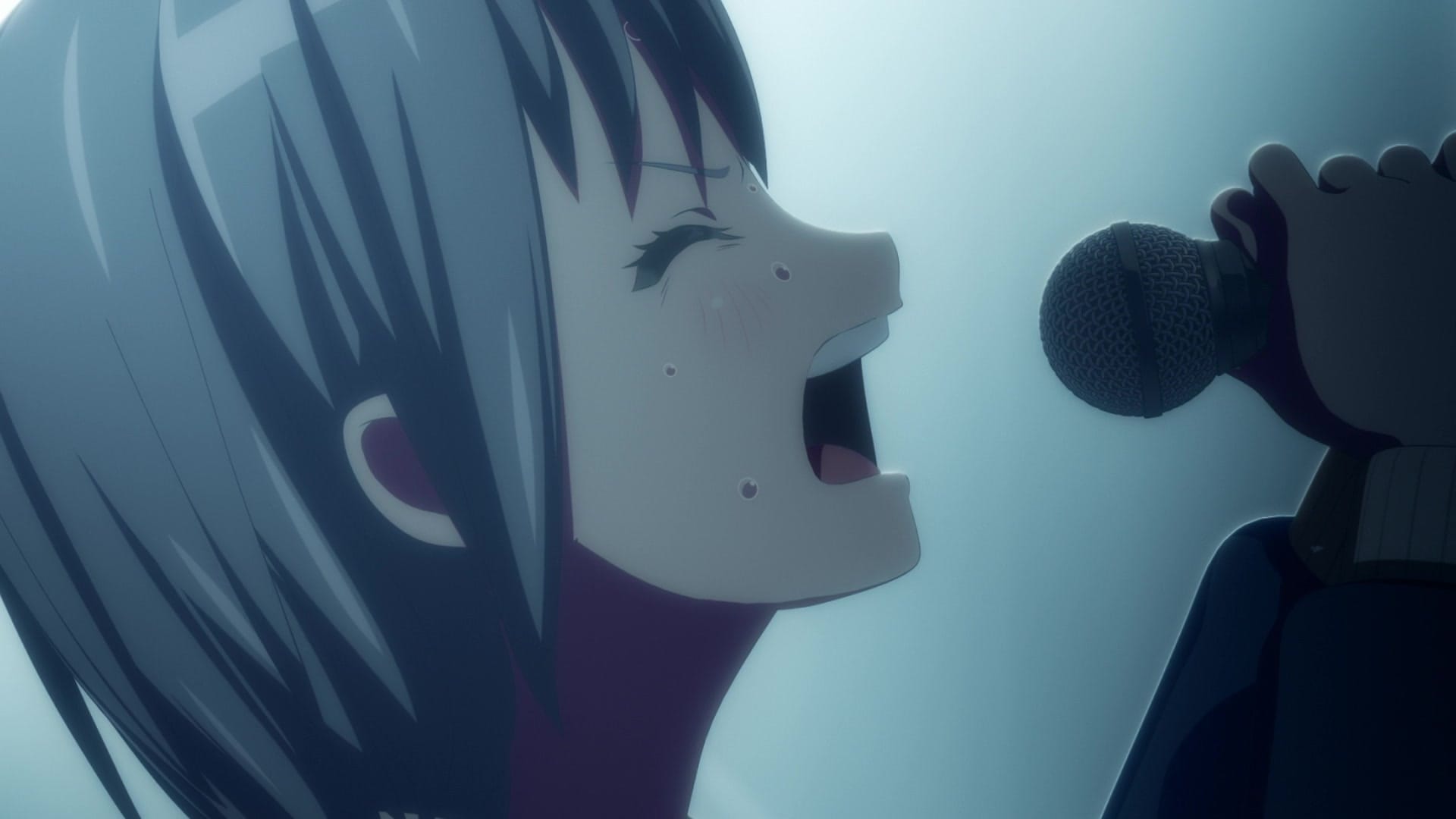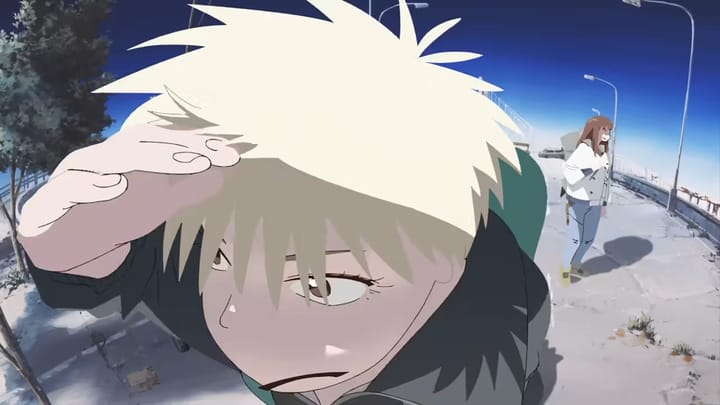Battle of the Bands: The Girls Band Cry Phenomenon
Girls Band Cry and its predecessors ask the question: how do you convey your passion, anguish and alienation to others without scaring them away?

Welcome to ANIWIRE! This week we’re talking about the currently airing anime series Girls Band Cry and other “girl band” anime of the past few years. Before that, though, here’s some past news from the anime and manga world.
News
- GKIDS picked up streaming rights for the upcoming fall anime series Dandadan. I don’t think they’ve done this before, so I’m curious to see what comes out of it!
- Another season of my beloved Delicious in Dungeon is on its way. Furries out there better brace themselves for impact.
- Studio Orange, the best CG studio currently producing TV animation in Japan, is adapting Scott Westerfield’s young adult series Leviathan for Netflix.
- In truly bizarre news, Sony Pictures (which owns Crunchyroll) bought Alamo Drafthouse Cinema. I wonder what Devin Faraci would think of this one.
- Meanwhile, the adorable short anime series Pui Pui Molcar is getting a film. I don’t know how I feel about it being CG rather than its signature stop motion, though…
- The cult classic Touhou RPG Devil of Decline is finally available in English! I interviewed the translator just last April.
Bookmarks
- For Anime Herald, Kennedy reported from the frontlines of popular cosplay convention Katsukon.
- For Anime Feminist, Mehitabel Glenhaber wrote about their experience reading through the work of manga artist Moto Hagio.
- For Sakuga Blog, Kevin Cirgueda has been reviewing various films from this year’s Annecy festival. Right now these include the highly anticipated film Look Back as well as the lesser known (but just as exciting) Ghost Cat Anzu.
- For Black Nerd Problems, Carrie McClain wrote about memorable manga cover design.
- For Shinseiki, Haru dug deep into the making of Mobile Suit Gundam: Char’s Counterattack.
What I Wrote
- At Crunchyroll News, I investigated the field of English language webfiction. Check it out!
- I also interviewed three folks at Kinema Citrus, the studio behind anime fan favorites like Made in Abyss and My Happy Marriage. This interview happened just a few minutes after they announced that their first two original shows were in production, so we talk a bit about that.
- For Comics Beat, I reviewed the pretty good but personally disappointing fantasy comic The Hunger and the Dusk.
- Beat’s Bizarre Adventure, a manga/webtoon collaboration I’ve been editing, is still going strong each week.
- At Unpacking the Shelf, my friend Alex and I recorded an episode on the very weird, ambitious and incomplete comic saga Starstruck.
AMV of the Week
Here’s “we got Stadium Love” by Synaesthesia Productions.
First came Bocchi the Rock!, which aired in the fall of 2022. Then came BanG Dream! It’s MyGO!!!!! in 2023. Finally, in 2024, Toei Animation aired the original series Girls Band Cry. Three shows about anxious high school girls playing rock music that earned cult followings in their respective years.
Hitori Goto’s anxiety is the heart of Bocchi the Rock! Her bandmates are just a side dish to the solipsistic chaos in her brain. MyGO!!!! by comparison goes all in on toxic interpersonal relationships. Put any two characters from the series together and you have a nightmare. Girls Band Cry occupies the middle ground. Every character in the series is searching for something, but it’s the heroine Nina Iseri that unites them through sheer stubbornness.
It’s unlikely that the success of Bocchi the Rock! affected MyGO!!!!! or Girls Band Cry in any way. Plenty of other music anime aired during that time period; at this moment, the third season of Sound Euphonium and the original series Jellyfish Can’t Swim in the Night are just wrapping up. But something about Girls Band Cry reminds me strongly of Bocchi and MyGO!!!!! There are echoes of a greater movement, here.

Let’s talk about Nina for a second. You might not know her–Girls Band Cry hasn’t been licensed for streaming yet, after all. Nina is a high school girl. She leaves school after being bullied and travels to Tokyo. What she says to her parents is that she intends to study independently so she can go to college. What she really wants is to sing for a living. When she meets Momoka, a former pro musician on the verge of giving up, she decides to do just that.
Nina lashes out at everybody around her. She argues with Momoka even though Momoka wrote her favorite song in the world. She judges their bandmate Subaru as a two-faced bully even though that could not be further from the truth. School is an inconvenience for her. Nina cannot help these huge feelings because she was betrayed by everybody she knew before moving to Tokyo. She can only ever apologize after she breaks stuff.

Girls Band Cry scriptwriter Jukki Hanada previously wrote the popular idol series Love Live. That franchise has always had “frustrating” characters, like Nico, that gradually endear themselves to the audience. It’s a different thing, though, to make Nico the lead. Girls Band Cry separates itself from Love Live (despite sharing creative staff) by making a “frustrating” girl like Nina the main character. She retains her rough edges even as she matures. The audience is expected, just like her fellow bandmates, to take Nina as she is.
Nina sings because she wants to connect. As a bullied child she found hope by listening to Momoka’s song. Every choice that she makes from that point forward, no matter how selfish, is in service of spreading that message. To sing, though, you have to speak up. Nina’s anger is so overwhelmingly huge that it won’t fit in her throat. She only becomes a better vocalist after she learns to communicate with her bandmates–by talking and listening, not just by grumbling like an evil little gremlin.

I can’t help but think of Tomori, the heroine of BanG Dream! It’s MyGO!!!!! Tomori is out of sync with everyone around her. She’s kind and thoughtful but has trouble expressing herself. She loves collecting things like band-aids and rocks. Unfortunately others don’t see what she values in the same way. Tomori is left to go through life hiding her true feelings while other people constantly apologize for her inability to read the room. When she finally does find friends, like her beloved Sachiko, they use and then toss her aside.
It takes until the end of the show, after her band nearly collapses, for Tomori to find her voice. She doesn’t sing on stage immediately. Instead she speaks her feelings, like she’s reciting poetry. It’s an unusual choice that’s especially off-kilter for a multimedia “idol” series. But that’s just the way Tomori is. She chooses to express herself honestly in the hopes that others will, finally, understand what she is trying to say. They do. Tomori can’t revive the band on her own, but she lays the foundation for its eventual rebirth.

Nina, Tomori and even Bocchi do not lack talent. The challenge they face is how to convey their passion, anguish and alienation to others without scaring them away. In other words: how can you reach other people’s hearts while retaining your authentic self? No matter how gentle the world in which you live, society judges those that do not fit in a box. Even anime characters are not immune.
For me, that’s what distinguishes these three shows from past music anime. The 2009 hit K-ON!, also about girls in a rock band, was a slice of life show at heart. Given touched on these themes in 2019, but was distinctly a series about high school boys rather than high school girls. Girls Band Cry and its predecessors position music as a form of communication and catharsis rather than a simple hobby or team sport. The medium for their (fictional) message is animation itself.

You can look at this phenomenon in one of two ways. The first is cynical: high school girls are universally marketable in the anime industry. They are likable, merchandisable and can be leveraged to propel the careers of specific voice actors and/or musicians. The heartwarming “anybody can overcome their anxiety and learn guitar” message of Bocchi the Rock! and its peers is, at the end of the day, just another way to sell branded CDs.
Nina isn’t that revolutionary of a figure, either. Her songs are standard pop no matter how much she insists on creative freedom. She is also made to reunite with her parents near the end of the series, perhaps because folks might otherwise judge her for cutting ties with them completely. (Sometimes, unfortunately, you have to cut ties with your family in order to survive!) Songs by actual independent bands typically don’t make it into big budget anime productions unless the producers either have very good taste or music industry connections.

But I think there is something to be said for the fact that there is now a major commercial anime series with a girl like Nina as the main character. Anime heroines are rarely allowed to be mean. Nina by comparison swings at a salaryman with a ceiling lamp in just the second episode. She is unfiltered from the start, and the show does not judge her for that. If anything, that lack of a filter is her strength. The same can also be said for Tomori, whose distinct perspective lets her make connections that her friends can’t. Even Bocchi’s self-destructive anxiety is relatable in this way.
The anime industry is in the middle of a grand contraction of possibility space. Anything outside of Shonen Jump adaptations and a few rare projects is having a tough time right now. Girls Band Cry and its predecessors are a rare example of the opposite: a distinct genre space and approach blossoming within constraints. There’s something very beautiful about that even though I don’t know how long it will last. Perhaps that is "rock."
